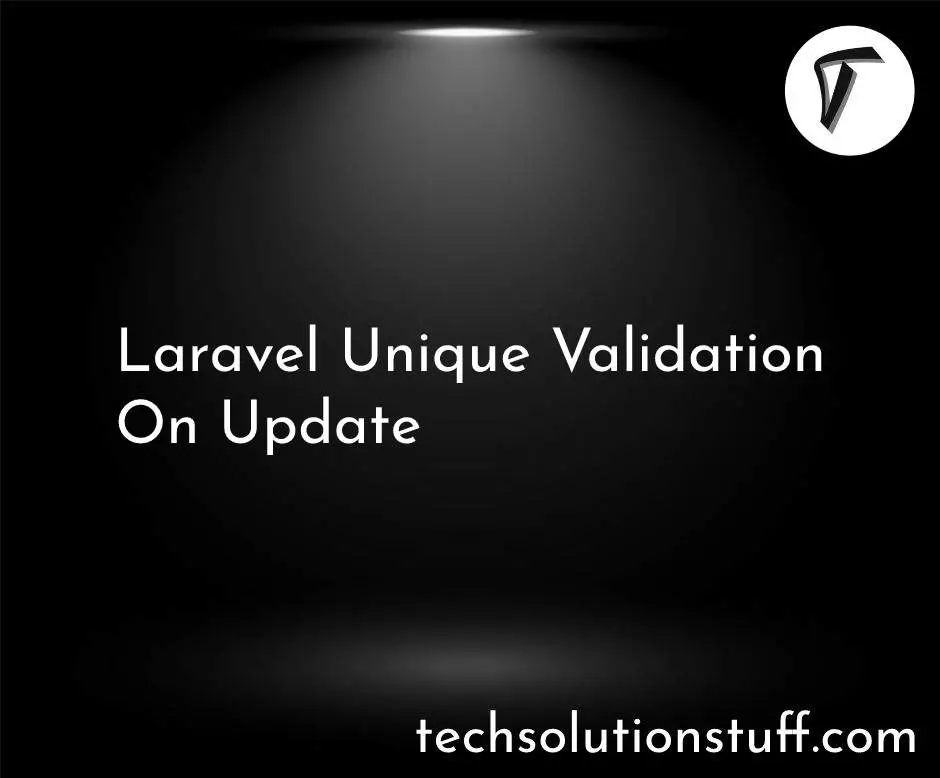Laravel 8 Custom Email Verification Tutorial
In this article, we will see laravel 8 custom email verification. Many web applications require users to verify their email addresses before using the application. Laravel provides convenient built-in services for sending and verifying email verification requests. Email verification is the process of checking and authenticating emails that you've been given to ensure that they're authentic and that they're likely to connect you to a real person.
So, we will give you an example of custom email verification in laravel 8. For custom email verification we need some basic requirements like middleware, routes, and mail configuration.
Let's see the email verification laravel 8.
In this step, we will create a new laravel 8 application using the below command.
composer create-project --prefer-dist laravel/laravel laravel_8_custom_email_verification
Now, we will configure a database in the .env file.
DB_CONNECTION = mysql
DB_HOST = 127.0.0.1
DB_PORT = 3306
DB_DATABASE = Your_database_name
DB_USERNAME = Your_database_username
DB_PASSWORD = Your_database_password
After adding database configuration, run the default migrations of laravel using the below command.
php artisan migrate
In this step, we will set up email configuration in the .env file.
MAIL_DRIVER = smtp
MAIL_HOST = smtp.gmail.com
MAIL_PORT = 587
MAIL_USERNAME = [email protected]
MAIL_PASSWORD = your_password
MAIL_ENCRYPTION = TLS
In this step, we will install the laravel/ui package for basic UI using the below command.
composer require laravel/ui
After installing laravel/ui. we will install bootstrap auth using the below command for basic login, and registration. After that, we will install NPM and run NPM in your project.
php artisan ui bootstrap --auth
Install NPM:
npm install
Run NPM:
npm run dev
Now, we will set up email verification on the user.php file. So, in the User model add an email verification class and use middleware for protection. In the User model, you need to add MustVerifyEmail Auth and implement MustVerifyEmail on the User class.
app/Models/User.php
<?php
namespace App\Models;
use Illuminate\Contracts\Auth\MustVerifyEmail;
use Illuminate\Database\Eloquent\Factories\HasFactory;
use Illuminate\Foundation\Auth\User as Authenticatable;
use Illuminate\Notifications\Notifiable;
class User extends Authenticatable implements MustVerifyEmail
{
use HasFactory, Notifiable;
/**
* The attributes that are mass assignable.
*
* @var array
*/
protected $fillable = [
'name',
'email',
'password',
];
/**
* The attributes that should be hidden for arrays.
*
* @var array
*/
protected $hidden = [
'password',
'remember_token',
];
/**
* The attributes that should be cast to native types.
*
* @var array
*/
protected $casts = [
'email_verified_at' => 'datetime',
];
}
routes/web.php
Auth::routes(['verify' => true]);
Route::get('/home', [App\Http\Controllers\HomeController::class, 'index'])->name('home');
app/Http/Controllers/HomeController.php
<?php
namespace App\Http\Controllers;
use Illuminate\Http\Request;
class HomeController extends Controller
{
/**
* Create a new controller instance.
*
* @return void
*/
public function __construct()
{
$this->middleware(['auth','verified']);
}
/**
* Show the application dashboard.
*
* @return \Illuminate\Contracts\Support\Renderable
*/
public function index()
{
return view('home');
}
}
You might also like:
- Read Also: How To Send Email Using Node.js
- Read Also: Laravel 8 Toastr Notifications Example
- Read Also: How To Check Email Already Exist Or Not In Laravel
- Read Also: How To Store Multiple Checkbox Value In Database Using Laravel








